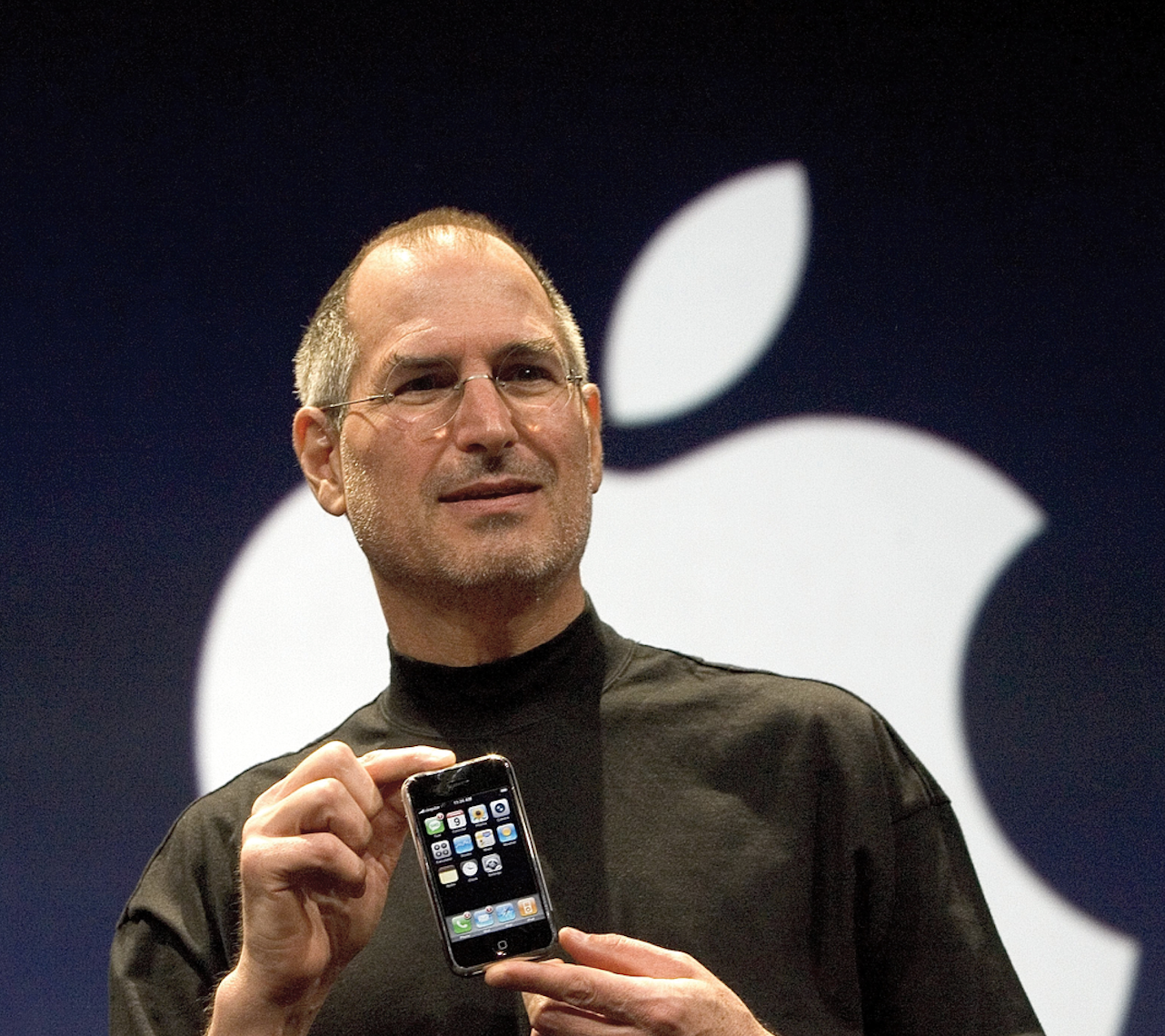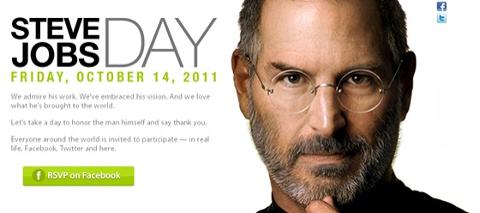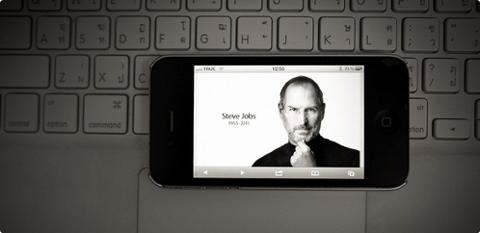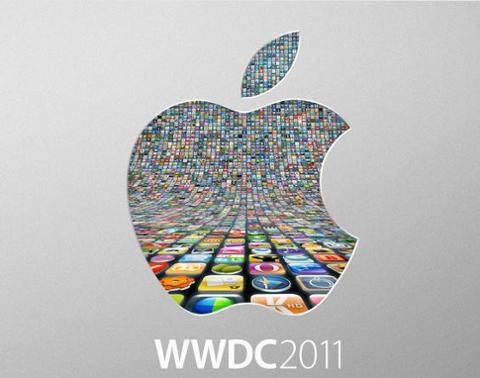 On January 9, 2007, Apple co-founder Steve Jobs stepped onto a stage in San Francisco and introduced a device that would have a seismic effect not only on the technology industry, but the world at large: the iPhone. To a worldwide audience unfamiliar with the basic concept of a smartphone (which was a lot of people, especially back then), Jobs introduced the device as a “widescreen iPod with touch controls, a revolutionary mobile phone and a breakthrough Internet communications device.” In subsequent years, of course, the iPhone would become much more, thanks to a growing collection of third-party apps created by a massive developer ecosystem. If you have a spare hour, Steve Jobs’ original presentation is well worth watching, as he explains some core concepts that would govern Apple’s mobile engineering over the next decade, including multi-touch: Despite the user-friendly touchscreen and colorful user interface, not everybody thought the iPhone would resonate with consumers. Asked about the iPhone during a press conference, Microsoft’s then-CEO Steve Ballmer predicted that the device wouldn’t appeal to business customers “because it doesn’t have a keyboard.” (He also denigrated Apple’s decision to price its phone at $500 for the base model; some reviewers, most notably The Wall Street Journal, also focused on whether customers would shell out that much money.) That price point aside (as well as the iPhone’s initial restriction to AT&T as its exclusive carrier), people lined up in front of stores to purchase the device when it went on sale that June. In 2008, Apple introduced a software development kit (SDK) for iPhone OS (the iPhone’s operating system, subsequently renamed iOS), along with the App Store. By the end of that year, there were 7,500 apps in the store, a number that would increase exponentially over the next decade; by mid-2016, there were more than 2 million apps. Last year, developers earned $20 billion from the App Store. Throughout nearly all its existence, the iPhone has competed toe-to-toe against Google Android, another smartphone operating system optimized for touch-screens. Until the day he died, Steve Jobs believed that Android was a “stolen product” (in his words) that ripped off the core components of iOS; he swore “thermonuclear war,” or at least years’ worth of courtroom fights. But Google would not be crushed. Even as other competitors—most notably BlackBerry and Windows Phone—took a shot at the smartphone crown and failed, Android seized a significant portion of the mobile market, powered in large part by Google’s decision to license the OS for free to hardware vendors. Within a few years of the iPhone’s debut, Apple was locked in competition against a variety of companies, including Samsung and HTC, all using some variation of Android for their mobile devices. The so-called “smartphone wars” ended in something like a draw, at least for the time being. “It's now perfectly clear that both Apple and Android have sufficient scale for their ecosystems to be viable (including the Android subset in China), and that no-one else does,” Benedict Evans, a partner at prominent venture-capital firm Andreessen Horowitz, wrote in a widely circulated blog posting in July 2016. “But at the same time, once you've achieved that scale, further changes in market share are not very meaningful.” Apple claims that consumers have bought a billion iPhones over the past ten years. That’s a huge install base for whatever the company decides to do with the iOS platform over the next decade (or two). Current scuttlebutt suggests that the next version of the device, due sometime in 2017, may eliminate mechanical buttons entirely. Certainly the hardware will be much, much faster than what Jobs debuted onstage all those years ago. Happy Birthday, iPhone. Unlike most of us, you’re only getting slimmer with age.
On January 9, 2007, Apple co-founder Steve Jobs stepped onto a stage in San Francisco and introduced a device that would have a seismic effect not only on the technology industry, but the world at large: the iPhone. To a worldwide audience unfamiliar with the basic concept of a smartphone (which was a lot of people, especially back then), Jobs introduced the device as a “widescreen iPod with touch controls, a revolutionary mobile phone and a breakthrough Internet communications device.” In subsequent years, of course, the iPhone would become much more, thanks to a growing collection of third-party apps created by a massive developer ecosystem. If you have a spare hour, Steve Jobs’ original presentation is well worth watching, as he explains some core concepts that would govern Apple’s mobile engineering over the next decade, including multi-touch: Despite the user-friendly touchscreen and colorful user interface, not everybody thought the iPhone would resonate with consumers. Asked about the iPhone during a press conference, Microsoft’s then-CEO Steve Ballmer predicted that the device wouldn’t appeal to business customers “because it doesn’t have a keyboard.” (He also denigrated Apple’s decision to price its phone at $500 for the base model; some reviewers, most notably The Wall Street Journal, also focused on whether customers would shell out that much money.) That price point aside (as well as the iPhone’s initial restriction to AT&T as its exclusive carrier), people lined up in front of stores to purchase the device when it went on sale that June. In 2008, Apple introduced a software development kit (SDK) for iPhone OS (the iPhone’s operating system, subsequently renamed iOS), along with the App Store. By the end of that year, there were 7,500 apps in the store, a number that would increase exponentially over the next decade; by mid-2016, there were more than 2 million apps. Last year, developers earned $20 billion from the App Store. Throughout nearly all its existence, the iPhone has competed toe-to-toe against Google Android, another smartphone operating system optimized for touch-screens. Until the day he died, Steve Jobs believed that Android was a “stolen product” (in his words) that ripped off the core components of iOS; he swore “thermonuclear war,” or at least years’ worth of courtroom fights. But Google would not be crushed. Even as other competitors—most notably BlackBerry and Windows Phone—took a shot at the smartphone crown and failed, Android seized a significant portion of the mobile market, powered in large part by Google’s decision to license the OS for free to hardware vendors. Within a few years of the iPhone’s debut, Apple was locked in competition against a variety of companies, including Samsung and HTC, all using some variation of Android for their mobile devices. The so-called “smartphone wars” ended in something like a draw, at least for the time being. “It's now perfectly clear that both Apple and Android have sufficient scale for their ecosystems to be viable (including the Android subset in China), and that no-one else does,” Benedict Evans, a partner at prominent venture-capital firm Andreessen Horowitz, wrote in a widely circulated blog posting in July 2016. “But at the same time, once you've achieved that scale, further changes in market share are not very meaningful.” Apple claims that consumers have bought a billion iPhones over the past ten years. That’s a huge install base for whatever the company decides to do with the iOS platform over the next decade (or two). Current scuttlebutt suggests that the next version of the device, due sometime in 2017, may eliminate mechanical buttons entirely. Certainly the hardware will be much, much faster than what Jobs debuted onstage all those years ago. Happy Birthday, iPhone. Unlike most of us, you’re only getting slimmer with age. iPhone at 10: Denting the Universe
 On January 9, 2007, Apple co-founder Steve Jobs stepped onto a stage in San Francisco and introduced a device that would have a seismic effect not only on the technology industry, but the world at large: the iPhone. To a worldwide audience unfamiliar with the basic concept of a smartphone (which was a lot of people, especially back then), Jobs introduced the device as a “widescreen iPod with touch controls, a revolutionary mobile phone and a breakthrough Internet communications device.” In subsequent years, of course, the iPhone would become much more, thanks to a growing collection of third-party apps created by a massive developer ecosystem. If you have a spare hour, Steve Jobs’ original presentation is well worth watching, as he explains some core concepts that would govern Apple’s mobile engineering over the next decade, including multi-touch: Despite the user-friendly touchscreen and colorful user interface, not everybody thought the iPhone would resonate with consumers. Asked about the iPhone during a press conference, Microsoft’s then-CEO Steve Ballmer predicted that the device wouldn’t appeal to business customers “because it doesn’t have a keyboard.” (He also denigrated Apple’s decision to price its phone at $500 for the base model; some reviewers, most notably The Wall Street Journal, also focused on whether customers would shell out that much money.) That price point aside (as well as the iPhone’s initial restriction to AT&T as its exclusive carrier), people lined up in front of stores to purchase the device when it went on sale that June. In 2008, Apple introduced a software development kit (SDK) for iPhone OS (the iPhone’s operating system, subsequently renamed iOS), along with the App Store. By the end of that year, there were 7,500 apps in the store, a number that would increase exponentially over the next decade; by mid-2016, there were more than 2 million apps. Last year, developers earned $20 billion from the App Store. Throughout nearly all its existence, the iPhone has competed toe-to-toe against Google Android, another smartphone operating system optimized for touch-screens. Until the day he died, Steve Jobs believed that Android was a “stolen product” (in his words) that ripped off the core components of iOS; he swore “thermonuclear war,” or at least years’ worth of courtroom fights. But Google would not be crushed. Even as other competitors—most notably BlackBerry and Windows Phone—took a shot at the smartphone crown and failed, Android seized a significant portion of the mobile market, powered in large part by Google’s decision to license the OS for free to hardware vendors. Within a few years of the iPhone’s debut, Apple was locked in competition against a variety of companies, including Samsung and HTC, all using some variation of Android for their mobile devices. The so-called “smartphone wars” ended in something like a draw, at least for the time being. “It's now perfectly clear that both Apple and Android have sufficient scale for their ecosystems to be viable (including the Android subset in China), and that no-one else does,” Benedict Evans, a partner at prominent venture-capital firm Andreessen Horowitz, wrote in a widely circulated blog posting in July 2016. “But at the same time, once you've achieved that scale, further changes in market share are not very meaningful.” Apple claims that consumers have bought a billion iPhones over the past ten years. That’s a huge install base for whatever the company decides to do with the iOS platform over the next decade (or two). Current scuttlebutt suggests that the next version of the device, due sometime in 2017, may eliminate mechanical buttons entirely. Certainly the hardware will be much, much faster than what Jobs debuted onstage all those years ago. Happy Birthday, iPhone. Unlike most of us, you’re only getting slimmer with age.
On January 9, 2007, Apple co-founder Steve Jobs stepped onto a stage in San Francisco and introduced a device that would have a seismic effect not only on the technology industry, but the world at large: the iPhone. To a worldwide audience unfamiliar with the basic concept of a smartphone (which was a lot of people, especially back then), Jobs introduced the device as a “widescreen iPod with touch controls, a revolutionary mobile phone and a breakthrough Internet communications device.” In subsequent years, of course, the iPhone would become much more, thanks to a growing collection of third-party apps created by a massive developer ecosystem. If you have a spare hour, Steve Jobs’ original presentation is well worth watching, as he explains some core concepts that would govern Apple’s mobile engineering over the next decade, including multi-touch: Despite the user-friendly touchscreen and colorful user interface, not everybody thought the iPhone would resonate with consumers. Asked about the iPhone during a press conference, Microsoft’s then-CEO Steve Ballmer predicted that the device wouldn’t appeal to business customers “because it doesn’t have a keyboard.” (He also denigrated Apple’s decision to price its phone at $500 for the base model; some reviewers, most notably The Wall Street Journal, also focused on whether customers would shell out that much money.) That price point aside (as well as the iPhone’s initial restriction to AT&T as its exclusive carrier), people lined up in front of stores to purchase the device when it went on sale that June. In 2008, Apple introduced a software development kit (SDK) for iPhone OS (the iPhone’s operating system, subsequently renamed iOS), along with the App Store. By the end of that year, there were 7,500 apps in the store, a number that would increase exponentially over the next decade; by mid-2016, there were more than 2 million apps. Last year, developers earned $20 billion from the App Store. Throughout nearly all its existence, the iPhone has competed toe-to-toe against Google Android, another smartphone operating system optimized for touch-screens. Until the day he died, Steve Jobs believed that Android was a “stolen product” (in his words) that ripped off the core components of iOS; he swore “thermonuclear war,” or at least years’ worth of courtroom fights. But Google would not be crushed. Even as other competitors—most notably BlackBerry and Windows Phone—took a shot at the smartphone crown and failed, Android seized a significant portion of the mobile market, powered in large part by Google’s decision to license the OS for free to hardware vendors. Within a few years of the iPhone’s debut, Apple was locked in competition against a variety of companies, including Samsung and HTC, all using some variation of Android for their mobile devices. The so-called “smartphone wars” ended in something like a draw, at least for the time being. “It's now perfectly clear that both Apple and Android have sufficient scale for their ecosystems to be viable (including the Android subset in China), and that no-one else does,” Benedict Evans, a partner at prominent venture-capital firm Andreessen Horowitz, wrote in a widely circulated blog posting in July 2016. “But at the same time, once you've achieved that scale, further changes in market share are not very meaningful.” Apple claims that consumers have bought a billion iPhones over the past ten years. That’s a huge install base for whatever the company decides to do with the iOS platform over the next decade (or two). Current scuttlebutt suggests that the next version of the device, due sometime in 2017, may eliminate mechanical buttons entirely. Certainly the hardware will be much, much faster than what Jobs debuted onstage all those years ago. Happy Birthday, iPhone. Unlike most of us, you’re only getting slimmer with age. 


